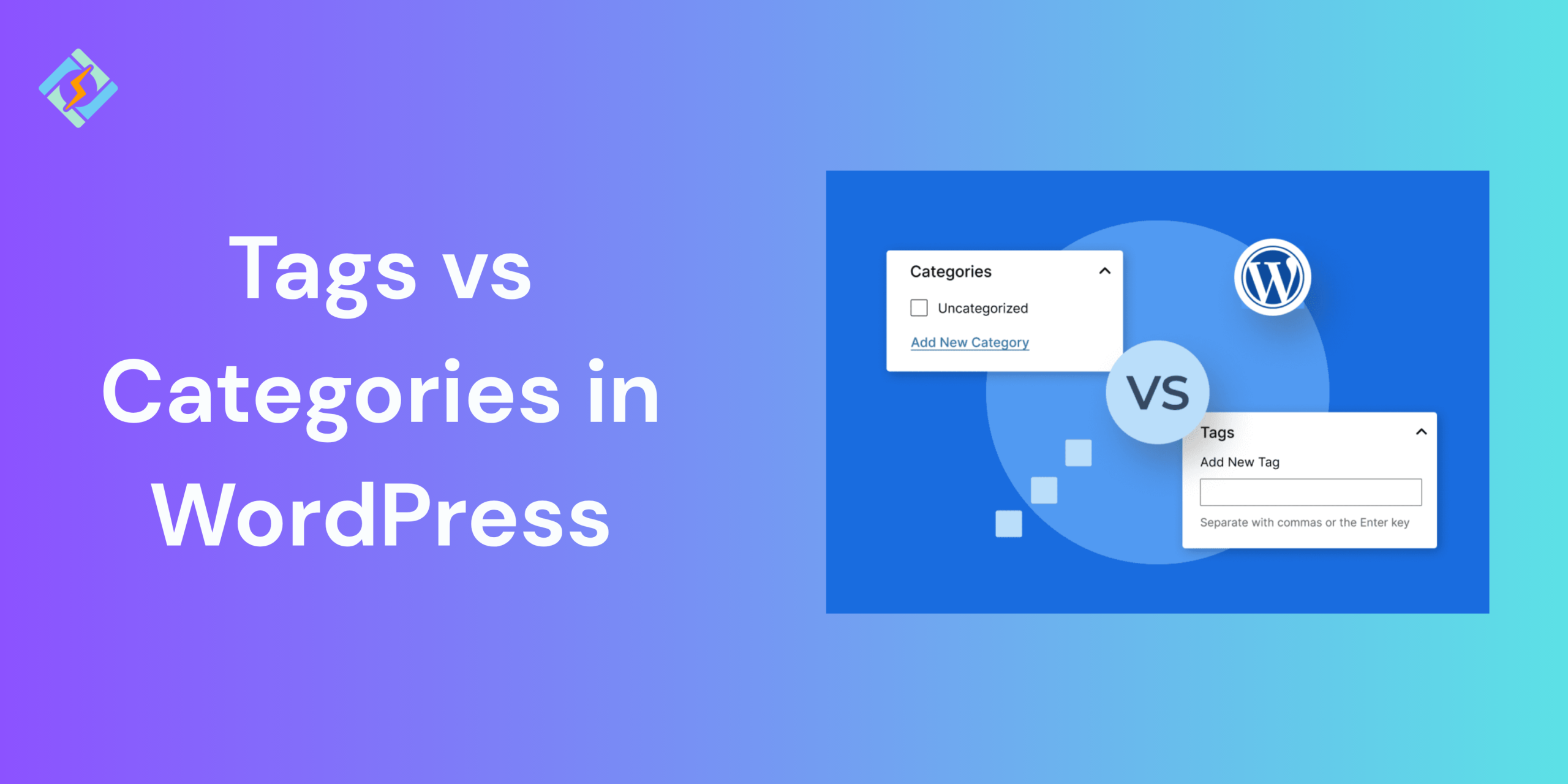Understanding the difference between Tags vs Categories in WordPress is crucial to really know what works for your blogs in 2025.
Tags and categories are quite alike, and they both aim to help you sort out the content on your website.
Building a well-structured WordPress site ensures that your content is easy to explore, interesting, and available for your audience. In this guide, we explore the major differences between WordPress categories vs tags and see how they impact blog optimization in 2025.
Understanding WordPress Categories

Categories in WordPress help organize content by general topics, creating a hierarchy that effectively structures your website. It’s a good idea to keep posts to a maximum of three categories, like affiliate marketing, especially for make-money-online blogs.
Categories are like big content containers. Every post should fit into at least one category so that visitors can quickly see what general topic it relates to. If you focus on more than one main area (like cooking and travel, for example), categories can help you separate those topics.
A post about a must-try pizzeria in Rome can fit into two categories: Restaurant Reviews and Travel Guides. While some bloggers focus on one category, opting for a single category is often wiser to prevent confusion for readers and search engines.
Get exclusive access to all things tech-savvy, and be the first to receive
the latest updates directly in your inbox.
Understanding WordPress Tags

WordPress tags function like labels – they’re not hierarchical, unlike categories.
For instance, if you have a blog post named Quick and easy vegetarian fried rice categorized under Recipes, you can include relevant tags such as vegetarian and 15-minute. This makes it easier for readers to quickly locate recipes that fit their dietary preferences or time limitations.
Example of Tags
Continuing with the digital marketing blog example, tags might include:
For a post titled “Top 10 On-Page SEO Tips for 2024“:
Tags: on-page SEO, SEO tips, 2024 SEO, SEO checklist
For a post titled “How to Create Amazing Instagram Stories“:
Tags: Instagram marketing, Instagram stories, social media tips, content creation
So Tags are specific keywords that help link related content. For instance, if you were building a site that reviews pop culture, you might choose tags like science fiction, horror, and action-adventure.
Tags vs Categories in WordPress: Key Differences
Categories vs tags WordPress forms the base of a website, creating a clear structure for content and helping search engines comprehend the site’s layout. They are necessary for each post and can include subcategories for better organization.
Tags vs categories in WordPress serve as detailed indicators, highlighting specific topics within the content and linking related content across different categories. They lack a hierarchy and are treated equally.
Creating and Assigning Tags in WordPress
- Go to Dashboard → Posts → Tags.
- Look for the “WordPress dashboard showing tags” option in the posts menu.
- Create a new tag page with fields for name, slug, and description.
- Modify the slug and add a description if necessary.
- Press “Add New Tag” to save the new tag.
- To include a tag while writing a post, go to “Tags” in the right panel of the block editor.
Creating Categories in WordPress
- Click on the “Posts” tab and choose the “Categories” option.
- Open a page to create and name your category.
- Click the “Create Category” button to finalize your category.
- Include details such as category name, slug or URL structure, “Parent Category” name, and an optional description.
- Assign a category to a new blog post in the “Post” settings.
- Limit categories to 5-10 for better focus.
- Always categorize your posts; if a post is uncategorized, go back and add it to a suitable category.
| Feature | Categories | Tags |
| Purpose | To organize posts into general topics or sections | To specify particular details or keywords of a post |
| Hierarchy | Yes (Sub-categories are allowed) | No (All tags hold equal importance) |
| Required | Yes (Every post must have at least one category) | No (Tags are not mandatory) |
| Permalink | Structure Can be included in URLs (e.g., /category/news/) | Structure can be included in URLs (e.g., /category/news/) |
| SEO | Impact Aids in site structure and internal linking | Can enhance SEO if utilized correctly |
| Display on Site | Commonly used for menus or navigation | Typically displayed as post metadata or tag clouds |
| Use Case | Consider them as “chapters” in your blog. | Consider them as “index keywords” |
Categories form the base of your website, establishing a clear structure for your content and aiding search engines in understanding your site layout. They are necessary for each post and can include subcategories for more precise organization.
Tags vs categories in WordPress function like the index at the end of a book, directing readers to specific subjects within your content. Categories work best for general topics and are typically mandatory when creating posts in WordPress. Tags are not hierarchical and can be applied across various categories, offering more specific or detailed information for improved content.
Discoverability tags assist in identifying content themes not included in categories and enable cross-referencing of related material.

Conclusion
I suggest you use tags vs Categories in WordPress for structure and tags for searchability. Don’t overload your posts with too many tags or categories that keep it clean and helpful.
FAQ’s
1. Is it possible to have a tag and a category with the same name?
Yes, WordPress does allow you to create a tag and a category that share the same name. However, this is not advisable as it may confuse users and search engines. It’s best to keep your taxonomy clear and distinct so that each term represents a different aspect of your content.
2. How many categories should a post include?
A post should ideally be assigned to one main category. This helps maintain a tidy site structure and prevents issues with duplicate content. You can assign a post to multiple categories if needed, but it’s advisable to limit this to the most relevant one.
3. Do tags contribute to SEO?
Tags can be beneficial for SEO when used appropriately. They enhance internal linking and assist users in finding related content. However, overloading your posts with excessive tags or creating tags for every minor keyword can result in low-quality content pages. Always prioritize quality over quantity.
5. Should I set tags or categories to noindex?
This depends on your SEO approach. If your category and tag pages provide unique and valuable content, they can remain indexed. However, if those pages are thin, duplicate, or infrequently updated, it’s advisable to noindex them to prevent SEO penalties. Many SEO plugins, such as Yoast or Rank Math, allow you to manage this easily.
6. Is it possible to modify my tag/category structure later?
Yes, you can adjust or reorganize your tags and categories whenever you wish. However, if your site is already indexed or has traffic, it’s crucial to redirect old URLs (using 301 redirects) to preserve SEO. Make changes carefully and consider using a plugin to handle redirection and prevent broken links.



